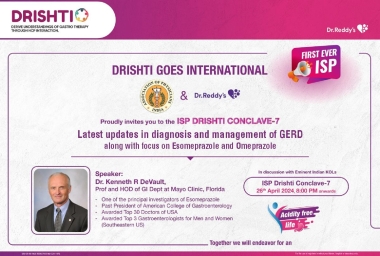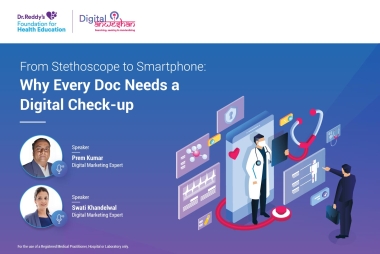test
test
test
test
test
test
test
test
test
test
Webinars
Videos
Courses
Medshorts

Effect of vitamin D3 supplementation in pregnancy on risk of autism and Attention Deficit Hyperactive Disorder
According to a recent study, maternal preintervention 25(OH)D (maternal 25-hydroxy-vitamin D) when given at a higher dose, decreased the risk of autism, decreased the risk of ADHD diagnosis, and lowered autistic symptom load. The conclusions of this study were published in the American Journal of Clinical Nutrition.
This randomized study was part of the COpenhagen Prospective Study on Neuro-PSYCHiatric Development (COPYCH) project and consisted of 700 healthy mother-child pairs who enrolled at the 24th week of pregnancy. 25(OH)D was measured at inclusion and 623 mothers underwent randomization to receive either the high-dose of 2800 IU/d (n=315) or standard dose of 400 IU/d (n=308) Vitamin D3 until one week after childbirth. At 10 years of age, diagnoses and symptom load of autism and ADHD, respectively was made utilizing the Kiddie-Schedule for Affective Disorders and Schizophrenia for School-Age Children-Present and Lifetime Version.
At the end of the study, it was seen from the psychopathologic evaluation that 591 (10-year old) children completed it. Out of this, 16 and 65 children were identified with autism and ADHD, respectively. A total of 496 children participated in the vitamin D3 trial (high-dose: 246; standard-dose: 250), out of which 12 and 58 children were identified with autism and ADHD, respectively.
Based on the above results, it can be concluded that higher levels of maternal preintervention 25(OH)D may be associated with a decreased risk of autism, lower autistic symptom load, and decreased risk of ADHD diagnosis. However, supplementation with high-dose vitamin D3 may not be associated with the risk of autism and ADHD.

Effect of vitamin D3 supplementation in pregnancy on risk of autism and Attention Deficit Hyperactive Disorder
According to a recent study, maternal preintervention 25(OH)D (maternal 25-hydroxy-vitamin D) when given at a higher dose, decreased the risk of autism, decreased the risk of ADHD diagnosis, and lowered autistic symptom load. The conclusions of this study were published in the American Journal of Clinical Nutrition.
This randomized study was part of the COpenhagen Prospective Study on Neuro-PSYCHiatric Development (COPYCH) project and consisted of 700 healthy mother-child pairs who enrolled at the 24th week of pregnancy. 25(OH)D was measured at inclusion and 623 mothers underwent randomization to receive either the high-dose of 2800 IU/d (n=315) or standard dose of 400 IU/d (n=308) Vitamin D3 until one week after childbirth. At 10 years of age, diagnoses and symptom load of autism and ADHD, respectively was made utilizing the Kiddie-Schedule for Affective Disorders and Schizophrenia for School-Age Children-Present and Lifetime Version.
At the end of the study, it was seen from the psychopathologic evaluation that 591 (10-year old) children completed it. Out of this, 16 and 65 children were identified with autism and ADHD, respectively. A total of 496 children participated in the vitamin D3 trial (high-dose: 246; standard-dose: 250), out of which 12 and 58 children were identified with autism and ADHD, respectively.
Based on the above results, it can be concluded that higher levels of maternal preintervention 25(OH)D may be associated with a decreased risk of autism, lower autistic symptom load, and decreased risk of ADHD diagnosis. However, supplementation with high-dose vitamin D3 may not be associated with the risk of autism and ADHD.


Effect of vitamin D3 supplementation in pregnancy on risk of autism and Attention Deficit Hyperactive Disorder
According to a recent study, maternal preintervention 25(OH)D (maternal 25-hydroxy-vitamin D) when given at a higher dose, decreased the risk of autism, decreased the risk of ADHD diagnosis, and lowered autistic symptom load. The conclusions of this study were published in the American Journal of Clinical Nutrition.
This randomized study was part of the COpenhagen Prospective Study on Neuro-PSYCHiatric Development (COPYCH) project and consisted of 700 healthy mother-child pairs who enrolled at the 24th week of pregnancy. 25(OH)D was measured at inclusion and 623 mothers underwent randomization to receive either the high-dose of 2800 IU/d (n=315) or standard dose of 400 IU/d (n=308) Vitamin D3 until one week after childbirth. At 10 years of age, diagnoses and symptom load of autism and ADHD, respectively was made utilizing the Kiddie-Schedule for Affective Disorders and Schizophrenia for School-Age Children-Present and Lifetime Version.
At the end of the study, it was seen from the psychopathologic evaluation that 591 (10-year old) children completed it. Out of this, 16 and 65 children were identified with autism and ADHD, respectively. A total of 496 children participated in the vitamin D3 trial (high-dose: 246; standard-dose: 250), out of which 12 and 58 children were identified with autism and ADHD, respectively.
Based on the above results, it can be concluded that higher levels of maternal preintervention 25(OH)D may be associated with a decreased risk of autism, lower autistic symptom load, and decreased risk of ADHD diagnosis. However, supplementation with high-dose vitamin D3 may not be associated with the risk of autism and ADHD.

Effect of early vitamin D supplementation on the occurrence of preeclampsia in primigravid women
A recent study found that administration of a monthly dose (60,000 IU) of vitamin D supplementation during the early stages of pregnancy demonstrated a notable decrease in the occurrence of preeclampsia. The study results were published in the journal, BMC pregnancy and childbirth.
This randomised clinical trial included 1300 primigravid women (median maternal age: 21 years; the median gestational age: 15 weeks) who were randomly assigned in a 1:1 ratio to either the supplemented (A) or control (B) group. Pregnant women in group A received a monthly dose of cholecalciferol (60,000 IU) orally for 6 months during antenatal care, while the control group (B) did not receive any vitamin D supplementation or placebo. Serum 25(OH)D levels were checked at the beginning and at 34 weeks of gestation, with outcomes assessed monthly until delivery.
In the intervention group, there was a significant decrease in the risk of preeclampsia (RR = 0.36) and preterm delivery (RR = 0.5). Moreover, an RR of 0.43 was identified for low birth weight and the RR for caesarean section was 0.63. The supplemented group demonstrated significantly higher APGAR scores at the 5th minute and a larger size of newborns.
The above results demonstrate that a single monthly dosage of vitamin D supplementation in early pregnancy had a substantial impact on lowering the occurrence of preeclampsia, as well as mitigating the associated complications experienced by both the mother and the fetus.

Effect of early vitamin D supplementation on the occurrence of preeclampsia in primigravid women
A recent study found that administration of a monthly dose (60,000 IU) of vitamin D supplementation during the early stages of pregnancy demonstrated a notable decrease in the occurrence of preeclampsia. The study results were published in the journal, BMC pregnancy and childbirth.
This randomised clinical trial included 1300 primigravid women (median maternal age: 21 years; the median gestational age: 15 weeks) who were randomly assigned in a 1:1 ratio to either the supplemented (A) or control (B) group. Pregnant women in group A received a monthly dose of cholecalciferol (60,000 IU) orally for 6 months during antenatal care, while the control group (B) did not receive any vitamin D supplementation or placebo. Serum 25(OH)D levels were checked at the beginning and at 34 weeks of gestation, with outcomes assessed monthly until delivery.
In the intervention group, there was a significant decrease in the risk of preeclampsia (RR = 0.36) and preterm delivery (RR = 0.5). Moreover, an RR of 0.43 was identified for low birth weight and the RR for caesarean section was 0.63. The supplemented group demonstrated significantly higher APGAR scores at the 5th minute and a larger size of newborns.
The above results demonstrate that a single monthly dosage of vitamin D supplementation in early pregnancy had a substantial impact on lowering the occurrence of preeclampsia, as well as mitigating the associated complications experienced by both the mother and the fetus.


Effect of early vitamin D supplementation on the occurrence of preeclampsia in primigravid women
A recent study found that administration of a monthly dose (60,000 IU) of vitamin D supplementation during the early stages of pregnancy demonstrated a notable decrease in the occurrence of preeclampsia. The study results were published in the journal, BMC pregnancy and childbirth.
This randomised clinical trial included 1300 primigravid women (median maternal age: 21 years; the median gestational age: 15 weeks) who were randomly assigned in a 1:1 ratio to either the supplemented (A) or control (B) group. Pregnant women in group A received a monthly dose of cholecalciferol (60,000 IU) orally for 6 months during antenatal care, while the control group (B) did not receive any vitamin D supplementation or placebo. Serum 25(OH)D levels were checked at the beginning and at 34 weeks of gestation, with outcomes assessed monthly until delivery.
In the intervention group, there was a significant decrease in the risk of preeclampsia (RR = 0.36) and preterm delivery (RR = 0.5). Moreover, an RR of 0.43 was identified for low birth weight and the RR for caesarean section was 0.63. The supplemented group demonstrated significantly higher APGAR scores at the 5th minute and a larger size of newborns.
The above results demonstrate that a single monthly dosage of vitamin D supplementation in early pregnancy had a substantial impact on lowering the occurrence of preeclampsia, as well as mitigating the associated complications experienced by both the mother and the fetus.

Effect of high-dose cholecalciferol supplementation in obese infertile men
A recent study suggests that that infertile men with obesity and low vitamin D status can attain adequate serum calcidiol (25OHD) levels through the supplementation of high-dose cholecalciferol (vitamin D3). This study’s findings were published in The British journal of nutrition.
The study was a double-blinded, randomized clinical trial conducted at a single center, with 307 infertile men assigned to either active treatment or a placebo for a period of 150 days. Participants in the active group were given an initial oral bolus of 300 000 mg of vitamin D3, followed by daily supplementation of 1400 mg of vitamin D3 and 500 mg of calcium.
At baseline, it was observed that men with a normal weight (BMI < 25 kg/m2) had notably higher levels of serum 25OHD compared to men who were overweight (BMI 25-30 kg/m2) and obese (BMI > 30 kg/m2) (48 nmol/l vs. 45 nmol/l and 39 nmol/l, respectively). Subsequently, after the intervention, it was found that men with normal weight, overweight, and obesity who received vitamin D3 treatment exhibited significantly higher levels of serum 25OHD in comparison to men in the corresponding placebo group (92 nmol/l vs. 53 nmol/l, 87 nmol/l vs. 49 nmol/l, and 85 nmol/l vs. 48 nmol/l; respectively).
Based on the above results, it can be concluded that high-dose vitamin D3 supplementation in obese infertile men with low vitamin D levels is effective in attaining optimal serum 25OHD levels.

Effect of high-dose cholecalciferol supplementation in obese infertile men
A recent study suggests that that infertile men with obesity and low vitamin D status can attain adequate serum calcidiol (25OHD) levels through the supplementation of high-dose cholecalciferol (vitamin D3). This study’s findings were published in The British journal of nutrition.
The study was a double-blinded, randomized clinical trial conducted at a single center, with 307 infertile men assigned to either active treatment or a placebo for a period of 150 days. Participants in the active group were given an initial oral bolus of 300 000 mg of vitamin D3, followed by daily supplementation of 1400 mg of vitamin D3 and 500 mg of calcium.
At baseline, it was observed that men with a normal weight (BMI < 25 kg/m2) had notably higher levels of serum 25OHD compared to men who were overweight (BMI 25-30 kg/m2) and obese (BMI > 30 kg/m2) (48 nmol/l vs. 45 nmol/l and 39 nmol/l, respectively). Subsequently, after the intervention, it was found that men with normal weight, overweight, and obesity who received vitamin D3 treatment exhibited significantly higher levels of serum 25OHD in comparison to men in the corresponding placebo group (92 nmol/l vs. 53 nmol/l, 87 nmol/l vs. 49 nmol/l, and 85 nmol/l vs. 48 nmol/l; respectively).
Based on the above results, it can be concluded that high-dose vitamin D3 supplementation in obese infertile men with low vitamin D levels is effective in attaining optimal serum 25OHD levels.


Effect of high-dose cholecalciferol supplementation in obese infertile men
A recent study suggests that that infertile men with obesity and low vitamin D status can attain adequate serum calcidiol (25OHD) levels through the supplementation of high-dose cholecalciferol (vitamin D3). This study’s findings were published in The British journal of nutrition.
The study was a double-blinded, randomized clinical trial conducted at a single center, with 307 infertile men assigned to either active treatment or a placebo for a period of 150 days. Participants in the active group were given an initial oral bolus of 300 000 mg of vitamin D3, followed by daily supplementation of 1400 mg of vitamin D3 and 500 mg of calcium.
At baseline, it was observed that men with a normal weight (BMI < 25 kg/m2) had notably higher levels of serum 25OHD compared to men who were overweight (BMI 25-30 kg/m2) and obese (BMI > 30 kg/m2) (48 nmol/l vs. 45 nmol/l and 39 nmol/l, respectively). Subsequently, after the intervention, it was found that men with normal weight, overweight, and obesity who received vitamin D3 treatment exhibited significantly higher levels of serum 25OHD in comparison to men in the corresponding placebo group (92 nmol/l vs. 53 nmol/l, 87 nmol/l vs. 49 nmol/l, and 85 nmol/l vs. 48 nmol/l; respectively).
Based on the above results, it can be concluded that high-dose vitamin D3 supplementation in obese infertile men with low vitamin D levels is effective in attaining optimal serum 25OHD levels.














































